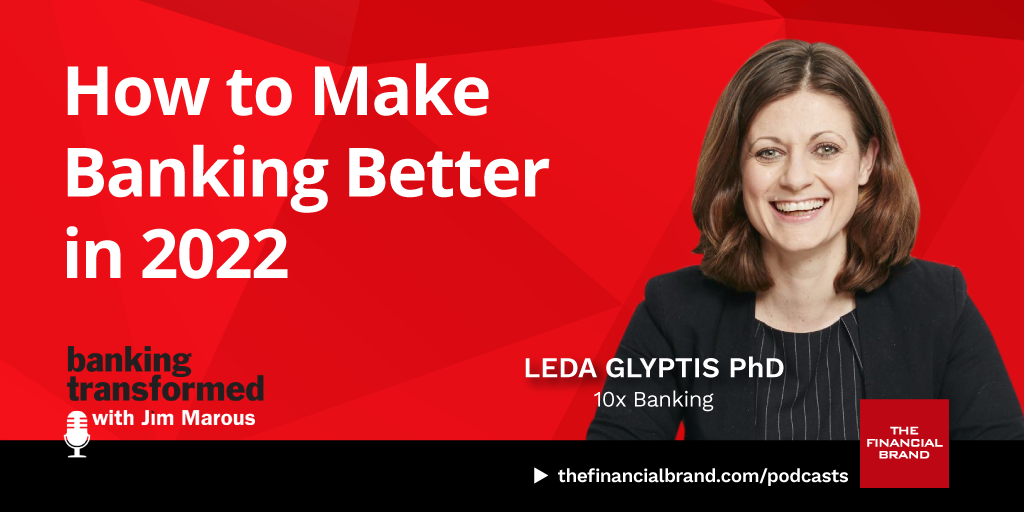Image credit: Beyond Fintech
Sophie Guibaud, from Beyond Fintech speaks with Dr Leda Glyptis, CCO at 10x in this webinar all about upgrading the world’s banking infrastructure. Here’s how you can watch the full session:
WATCH via Youtube: https://lnkd.in/dB5cM5y2
LISTEN via Spotify: https://spoti.fi/3nAfyx2
LISTEN via Amazon Music: https://amzn.to/395p0zS
Sophie and Leda explore what it does, and will, take to upgrade the banking infrastructure of some of the world’s largest and oldest banks. They look at why large incumbent banks are where they are, how to overcome the complications they face in moving towards a digital future, and what it takes to make that decision - to essentially take the beating heart out of your bank while keeping the blood pumping.
“Banks have started waking up to what could be done. What should be done. And now, it is much easier to build the infrastructure to accelerate those ambitions.”
What are the challenges of legacy banking infrastructure?
Knowing the problem you’re solving from the inside, equips you to solve it better. Many within 10x have spent years working inside banks and that experience has been valuable in the transition to the technology side. You know what problem you've solving, but you also know why it is the way it is. The reality is that banks have uneven technical landscapes. It's not accurate to say all banking technology is aged. But it is fair to say that quite a lot of it is. Having such a variety in technology maturity is as much a problem.
Historically, we’ve seen banks grow either organically or by acquisition. They have always been responsive to technology innovation - that ability to invest in technology has always been there. Yet, for the largest and oldest banks, you see a very complicated estate. As they have grown, by whichever means, banks have made operational decisions about whether to streamline or not. Repeat that over your geographical and product landscape, and the decisions on what to do, where to do it, and when, become very hard indeed.
10x comes in right at the core, where most banks are quite dated. They are not designed for agility; they are not designed for flexibility. They are batch-based, rather than real-time. They are designed as fortress’, rather than API-enabled. Data comes in and stays in.
We know what needs to be achieved in the ledger and product configuration space, and we know banks shouldn't be building it themselves. It's not where the differentiation really happens. We deliver an infrastructure that means the digital vision is not held back, the regulatory requirements (that are ever increasing) are met and that scalability and security are married. And, fundamentally, that the problems that once made it difficult for a bank to commit to a core upgrade are eliminated.
Banks can now deliver their digital vision on top of digital plumbing.
What does it look like start to finish? What does it take to make the decision to change to a different technology?
It's a journey for the industry and for the organisation. Banks have prioritised spending their "digital budget" where it is visible; to customers, to colleagues, to ecosystem players. A lot has been UX-heavy or focused on capabilities that were surfaced in a visible user experience.
Updating your ledger has been less appealing and less top of mind - it's been considered extremely difficult and, just not that visible. But as those more visible innovations have matured in the market, the realisation that you need digital infrastructure all the way down has started to sink in.
The second thing that has changed is that companies like 10x are taking away the biggest risk factor that came with a core replacement. Ten years ago, this decision could be career ending, taking much longer and costing much more than anticipated, without delivering on expectations.
That doesn't happen anymore. The flexibility of the technology, the ability to iterate and stand-up change piece by piece, embed, test, prove the value, learn - that's how we now work. We see banks coming to the table with a true digital vision and an actual appreciation for what it takes to deliver.
What's been the evolution of internal cultures to get here?
The culture changes are profound, but they are mostly championed by the banks. First, they have moved away from only trusting what they build themselves. Now, they have started to really understand the competitive edge of what they should build, where they should partner and what they should buy. They have started to trust that vendors are offering partnerships that are much more valuable to them than building.
A true appreciation for the transformation, means an understanding there are lots of aspects to this; operational model, hiring plans, risk modules and more. Most banks are undergoing this change to even approach a company like 10x.
What's your view around Banking-as-a-Service (BaaS) and embedded finance - should banks stick to retaining the customer relationship or can they use BaaS?
When banks started the digital journey, many felt strongly that they wanted to keep the customer relationship but didn't understand what that really meant. What I like about BaaS is that it shows a maturity in understanding, in what retaining the customer relationship looks like. In short: get out of their way, give them what they need, and retain relevance to their life where and when it matters, to solve problems in their life. The belief that you had to be front of shop, and it needed to be constant interaction with your brand was damaging.
BaaS is a great way to retain and deepen the customer relationship but in a different way. Putting you much closer to the actual problem you’re solving, and understanding the economics of how these platforms work, can transform the customer relationship.
Is Banking-as-a-Service a trend or an exception?
It's not an exception but neither is it dominating at the moment. More and more banks are wrapping their head around it, but where they are at with either their maturity or ambition, varies. Every player needs to have digital infrastructure, not every player needs to play in the BaaS space.
We'll see heightened education on embedded finance in the next 2 years. What can often be absent from discussions is not courage, but imagination. Learning more will ignite those synapses, providing more vision, which will accelerate the conversations around BaaS.
How do you educate large organisations on new concepts?
It's much easier now than it was. The context has changed. The demographics in organisations have changed. We’ve seen three hacks that have helped:
- Show it, don't tell it. Bring someone in that's doing it, demo it or bring it to life in a way that moves it away from being a matter of opinion
- Find the angle that makes it relevant
- Get an organisation to the place where they accept that not everyone needs to learn everything, collective understanding of the direction of travel, yes, and then trust each other to do the deeper learnings
Most amazing ideas have failed because of the lack of business clarity not technological viability.
10x puts tools in the hands of clients that allow for creativity, for product configuration and a flexibility of operating system to do whatever you need to do on top of it. Our technology makes it easier for banks to provide features that match their vision, imagination and understanding of their customers. At the crux of our platform is the ability to surface the data and process it in a way that reveals the needs of the demographic, and subsequently the flexibility to tailor products that will meet those needs. Faster and easier.
Seeing how radically different the use cases can be on top of that technology really validates the key assumption that, to make banking 10x better, you need to make the pipes 10x better, and on top of that banks bring the vision and the desire. We're so happy to be part of that journey for our clients.
If your bank has the vision and desire, 10x has the digital infrastructure to deliver change all the way through your stack. Wherever your bank may be on that journey, our team of banking and technology experts are on hand to help realise your vision.




